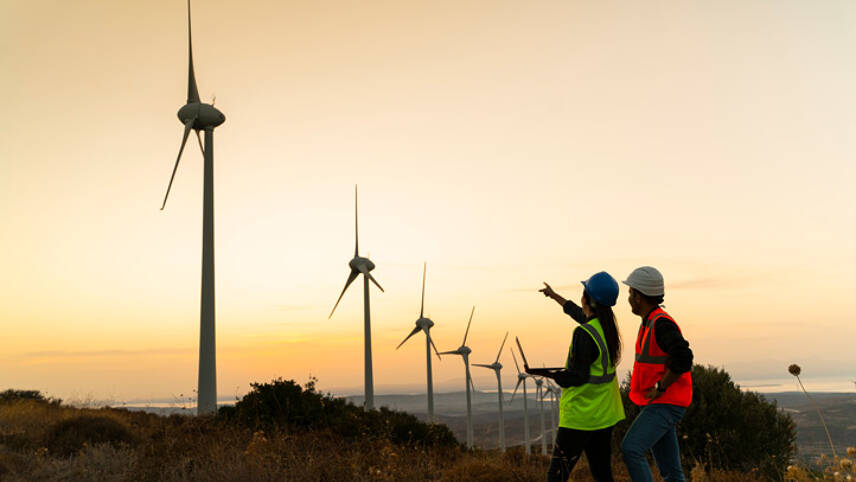Register for free and continue reading
Join our growing army of changemakers and get unlimited access to our premium content

Firstly, the technology is well-established and has demonstrated its effectiveness for many years, offering substantial capacity for clean energy generation and contributing significantly to the country’s renewable energy targets. Moreover, public support and awareness for offshore wind power are generally high, making it a politically favourable option for government initiatives and policies.
An intricate puzzle
Despite the lack of bids in the recent energy auctions (CfD AR5), the UK Government is targeting 50GW of offshore wind by 2030, up from only 10.5GW installed at present. This would be an industry first – never has 30GW been built in just seven years – and would go a long way to helping the UK reach its climate goals. However, the Climate Change Committee (CCC), the independent statutory body that advises the UK and Devolved Governments on emissions targets, emphasises a crucial point – no single technology can deliver all the generation that is needed to realise the UK’s energy transition.
We must recognise that power generation is just one piece of this intricate puzzle. A successful transition will require solving a number of other challenges, including energy storage and market confidence. What is clear, is that a holistic approach is the only route to a successful UK transition.
Striking a balance
The need to scale up renewable energy production in the UK is paramount. 3.7GW of onshore contracts (namely wind and solar) were awarded in CfD AR5 this Autumn, including three of Statkraft’s projects. These will power the equivalent of two million homes. Increasing investment and the availability of renewable energy sources have the potential to address many of the issues we are currently facing in the UK, reducing energy costs for consumers, increasing job opportunities, and improving energy security. This, in turn, protects the population from the unpredictable price fluctuations of fossil fuels that we continue to see in the global energy market, brought into sharp focus by Russia’s invasion of Ukraine.
What sets Statkraft apart is our ability to go beyond just recognising the need for a holistic approach, but that we have the capability to implement it, drawing upon a standout team of experts delivering a real breadth of energy technologies.
As the UK seeks to find the ideal balance between onshore and offshore wind, solar power, and green hydrogen, it is essential to think beyond the generation of clean energy itself. To ensure we can scale up renewables quickly enough to meet growing demand, we must also think about the supporting technologies that will facilitate their effectiveness.
As more renewable projects are constructed to drive the transition from fossil fuel plants to renewable energy, new innovative solutions to maintain stability in the electricity grid are needed. One of Statkraft’s answers to this challenge comes in the form of Greener Grid Parks. These projects utilise technologies such as synchronous compensators and batteries to deliver the stability needed for the grid to run seamlessly. They maintain system strength and deliver a service traditionally provided by fossil fuel power plants, but without producing harmful carbon emissions. Greener Grid Parks allow more renewables to be connected to the grid, resulting in cheaper energy for consumers and businesses, and more home-grown energy being generated within the UK.
Beyond generation
What is certain is that scaling renewables goes beyond power generation alone. We must also innovate in order to decarbonise harder-to-reach sectors. At Statkraft we’re developing a number of green hydrogen projects across the UK. Green hydrogen can be used as a clean alternative to fossil fuels traditionally used in power sectors such as transport and industry.
It is essential that the effort we make to scale up renewables is mirrored in other areas. Alongside technological advancements and innovative partnerships, we must also prioritise trading solutions within the renewable energy sector. We must ensure that the renewable energy generated at projects is converted into stable revenue for the developers.
As the UK’s leading energy transition trader, Statkraft is well placed to ensure there is a thriving market for this renewable energy, an essential piece of the puzzle. We employ innovative strategies, such as locking in buy-and-sell prices for renewable assets, an approach that helps to reduce the risk of the asset owners’ investment. This means we are able to create a stable and predictable revenue stream which will help to boost investor confidence, and ultimately facilitate the deployment of more renewable projects.
Solving the puzzle
Scaling up renewables is about far more than just generating power. It encompasses a comprehensive strategy that includes grid stability, integration with key industries, and innovative financial mechanisms. The road to a sustainable future requires us to be multifaceted in our approach, addressing these challenges, with a technology-agnostic approach, in order to drive the energy transition quickly and effectively.



Please login or Register to leave a comment.